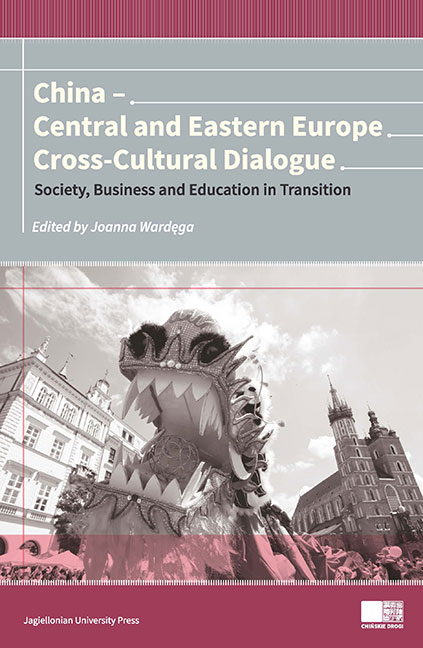Book contents
- Frontmatter
- Contents
- Foreword
- PART I Society and Culture in Transition
- Idealism and Relativism in Ethics: Comparing China and Central Eastern Europe (CEE)
- China's Role in the New World Order
- Redefining and Elderly Caregiving in the 21st Century China and Poland
- Roadmap for Moving to a Low Carbon Economy in China and Poland. Comparative Analysis
- Chinese Community in Poland – the Dynamics of its Development
- Perceptions of China among Central and Eastern European University Students
- Transformation of the Dragon – China's Image in the Polish Media
- Bridges and Obstacles in “the Way of the Ideal Government”: the Transition from Mind Confucianism to Political Confucianism from Jiang Qing's Point of View
- Conceptualizations of Constitutionalism in Recent China's Debates: Preliminary Typologies
- PART TWO Economy and Markets in Transition
- PART THREE Education in Transition
- Contributors
China's Role in the New World Order
from PART I - Society and Culture in Transition
Published online by Cambridge University Press: 22 December 2017
- Frontmatter
- Contents
- Foreword
- PART I Society and Culture in Transition
- Idealism and Relativism in Ethics: Comparing China and Central Eastern Europe (CEE)
- China's Role in the New World Order
- Redefining and Elderly Caregiving in the 21st Century China and Poland
- Roadmap for Moving to a Low Carbon Economy in China and Poland. Comparative Analysis
- Chinese Community in Poland – the Dynamics of its Development
- Perceptions of China among Central and Eastern European University Students
- Transformation of the Dragon – China's Image in the Polish Media
- Bridges and Obstacles in “the Way of the Ideal Government”: the Transition from Mind Confucianism to Political Confucianism from Jiang Qing's Point of View
- Conceptualizations of Constitutionalism in Recent China's Debates: Preliminary Typologies
- PART TWO Economy and Markets in Transition
- PART THREE Education in Transition
- Contributors
Summary
Introduction
Chinese cultural heritage may provide missing messages for global institutions: how to reach long-term sustainability and efficiency, and how to accommodate to Eastern cultures. These are the two basic pillars of global peace, or otherwise of enhancing the normative convergence all around the world. We would not like to suggest that western religious tradition needs the East to solve the problems of the world (as Voltaire suggested), but we state that both sides have to have the ability to understand and cooperate with each other. Basically, this means global harmony of all high cultures in the world, which may be the foundation of global institutions in the current wave of globalisation; as Buzan says:
“Peaceful rise involves a two-way process in which the rising power accommodates itself to rules and structures of international society, while at the same time other powers accommodate some changes in those rules and structures by way of adjusting to the new disposition of power and status.” (Buzan, 2010, p. 5)
“Peaceful rise” itself is not a historical fact, it's an idealistic goal that is based on all levels of international cooperation – this is the meaning of the term “two-way process”. Since this goal is impossible to be achieved by China alone, it requires continuous harmony among the actors of the international arena to create the necessary conditions. This proves that the common global interests are the sources of competitiveness.
Confucian and Taoist values, China's history and its solutions for creating a unity within the Great Wall serves as an example for global powers in the 21st century in forming a sustainable method of solving global and regional issues. This is the most important source of China's own developing model that differentiates it from:
Western countries;
those emerging countries that adapted the Western suggestions and best practices without any reservations;
leading global powers that are historically more integrated into global issues (e.g. Russia).
Although China is increasingly included in globalization, the concrete process is a matter of how China joins globalization rather than how China modifies the current workflow.
- Type
- Chapter
- Information
- China - Central and Eastern Europe Cross-Cultural Dialogue Society, Business and Education in Transition , pp. 35 - 46Publisher: Jagiellonian University PressPrint publication year: 2016



